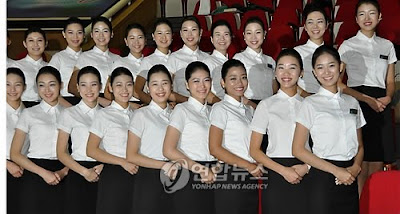Song also stressed that Korean teachers should replace native English-speaking teachers as soon as possible. "Currently, only 20.5 percent of native English speaking teachers (at schools) have teaching licenses (according to data from the Education Ministry, November 2008), so it is urgent for us to foster teachers who have excellent English proficiency," Song said.
"The native speakers are not qualified and are often involved in sexual harassment and drugs."
This was posted to Gusts of Popular Feeling, which rightly points out it was written by Kang Shin-who, the worst journalist in Korea's English-language press. He links to a post I did in June, bringing into question some of the controversial comments the head of the International Graduate School of English said about native speaker English teachers. Here's what Park Nam-sheik was quoted as saying in the Times in April:
The president [Park Nam-sheik] stressed that a teaching license doesn't mean competence as an English teacher. ``Schools should open their doors more to those who can speak English well. Still many teachers are opposing to give opportunities to English teachers without teaching certificates to teach students at public schools,'' Park said. At the same time, he was very pessimistic about the increasing number of foreign English teachers from the U.S., Canada and the U.K.
``Most of the native English speakers don't have much affection toward our children because they came here to earn money and they often cause problems,'' Park said. ``If we need native English speakers, it would be better inviting young ethnic Koreans who have hometowns here. Also, we have to invite qualified English teachers from India, Malaysia and the Philippines as English is not a language only for Americans and British people.''
``Above all, we should produce qualified teachers who can replace native English speakers. I can assure you our school will produce such teachers,'' he added.
This post provides some commentary on that, and I have it on pretty good authority that Kang twisted and even fabricated some of what's attributed to Park.
I most recently brought up Kang Shin-who on the 13th, when Professor Douglas Gress of Seoul National University claimed Kang distorted what he said in an interview about foreign professors and their hardships at that university.
And Gusts of Popular Feeling links to another of his own posts:
Another article by Kang from March this year has the supervisor of the Incheon education office, Koo Young-sun, on record saying that, "Many foreign teachers lack teaching methodology and some of them are not ethically qualified to treat children." A Yonhap article on the same topic (in Korean) has no mention of these controversial statements from the supervisor.
So either the people in charge of English education and its development in Korea are terribly ignorant, or some journalists feel compelled to create such a belief. Either way, it doesn't help us. I've written several times that there's a profound ignorance among many Koreans about who native speaker English teachers are and what they do, and articles like this, articles that perpetuate this ignorance, are dangerous. University presidents, or plenary speakers at KOTESOL conferences, can get a round of applause by pointing out how bad native speaker English teachers can be, but perhaps it would be more useful to point out just how broken the system is, just how many "unqualified" Korean "English" teachers there are, how the system sets up native speaker English teachers to fail, and that South Korea has decided not to make certificates and other "qualifications" necessary in its quest for quantity over quality.
I'd encourage you to browse the "English in the news" category for more about, well, English in the local news.


















































